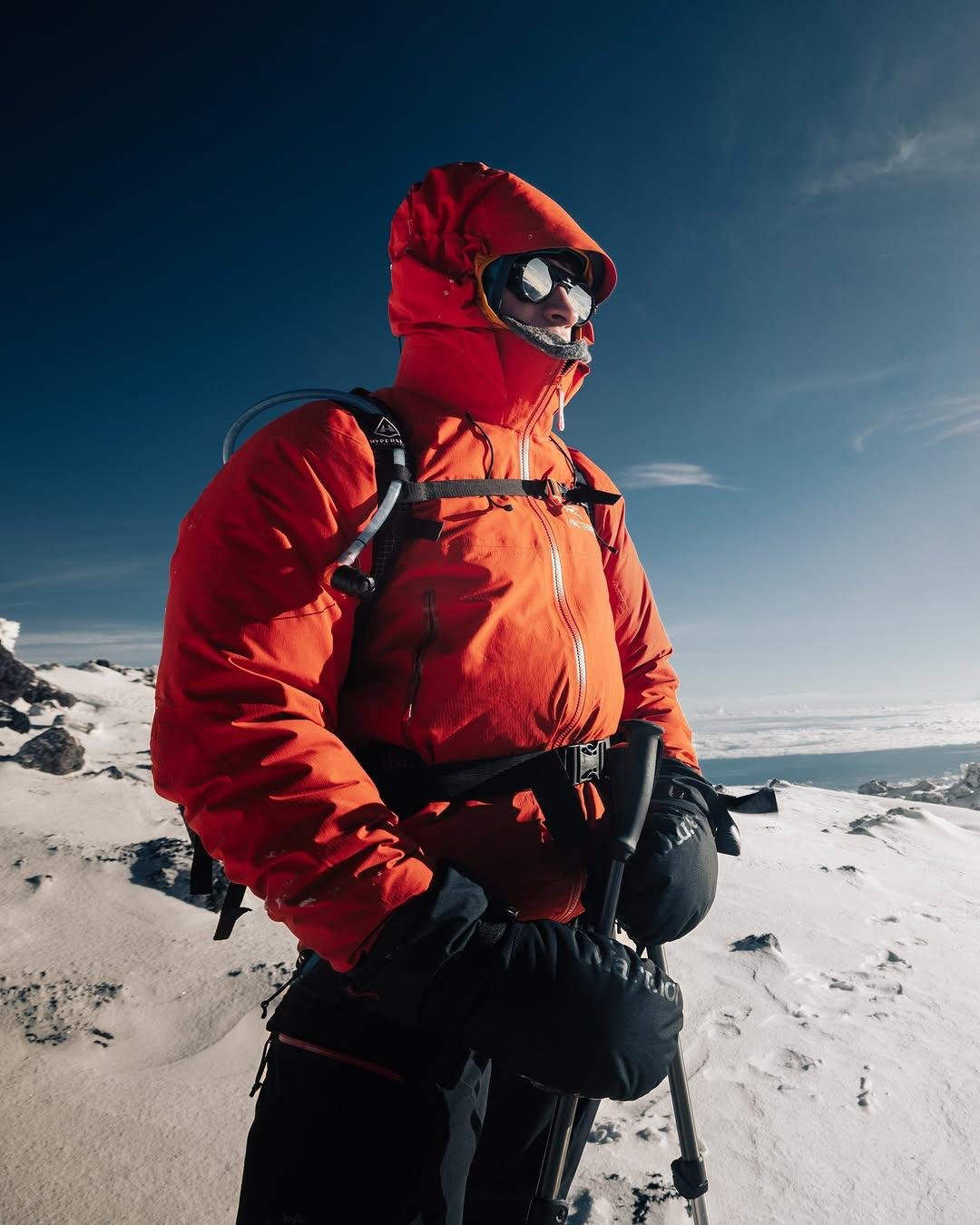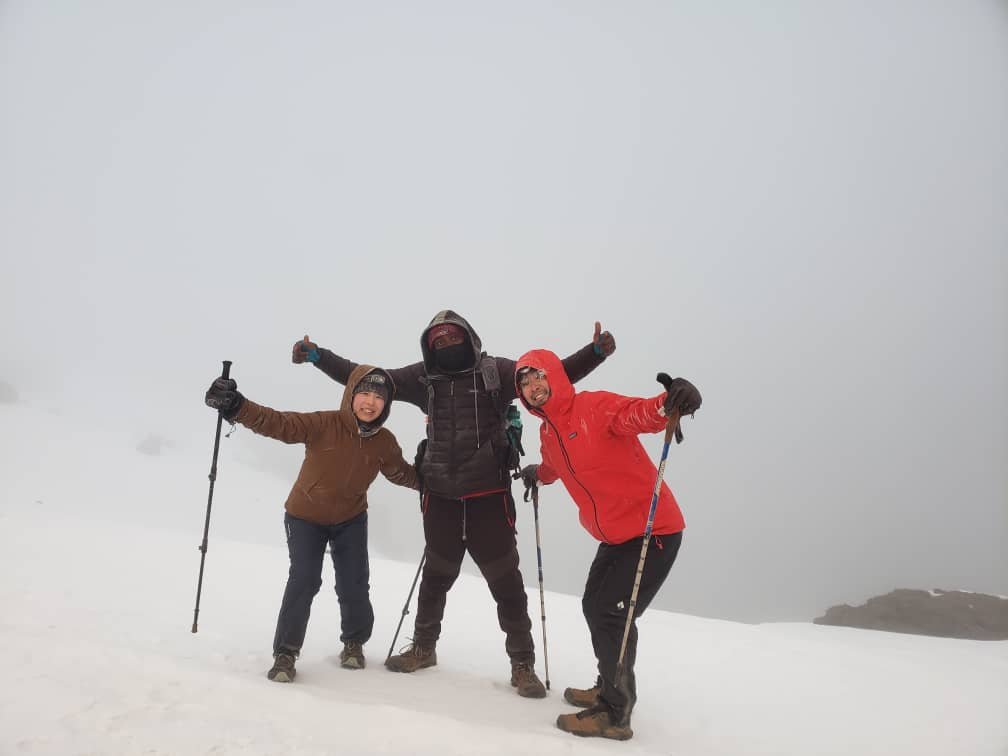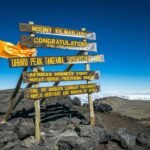KILIMANJARO RECORDS BREAKERS (FASTEST CLIMBS) : Kilimanjaro Speed Records- Defying the Odds with Fastest Climbs
Kilimanjaro, the highest peak in Africa and the tallest free-standing mountain in the world, stands at an impressive 19,341 feet (5,895 meters). It is a popular destination for adventure seekers and nature enthusiasts, with thousands of climbers attempting to reach its summit every year.
However, for some, simply reaching the top is not enough. These determined individuals push themselves to the limit, attempting to set new speed records for the fastest climb up Kilimanjaro.
Let’s take a look at some of the remarkable achievements of those who have conquered this monumental feat in record time.
KILIMANJARO RECORDS BREAKERS (FASTEST CLIMBS) : The Current Record Holders:
The current record for the fastest ascent and descent of Kilimanjaro stands at just 6 hours 56 minutes and 24 seconds, achieved by Swiss alpinist Karl Egloff in August 2014. Egloff beat the previous record of 7 hours 14 minutes set by Spanish runner Kilian Jornet, making him the undisputed speed king of Kilimanjaro.
This is an incredible feat, considering that it takes most climbers 5-7 days to reach the summit and return to the basecamp.

KILIMANJARO RECORDS BREAKERS (FASTEST CLIMBS) : The Fastest Female Climb:
On February 23 of this year, Kristina set a new World Record. She became the quickest female runner to reach the summit of Mt Kilimanjaro, the highest mountain in Africa. In an impressive feat, she completed the summit in just 6 hours and 52 minutes and 54 seconds.
This remarkable accomplishment was achieved by a talented athlete who trains in a country where the highest peak is less than 200 meters tall. She beat the previous record set by Brazilian Fernanda Maciel who recorded an ascent time of 7 hours 8 minutes.
And prior to this record, German ultra runner Anne-Marie Flammersfeld set a record time of 8 hours and 32 minutes to reach the top of Kilimanjaro.
Flammersfeld’s record time was a big leap at the time, smashing the previous female speed record held by Brit Becky Shuttleworth by three hours.
KILIMANJARO RECORDS BREAKERS : Simon Mtuy — Setting a Different Kind of Record:
While speed records are often the focus of Kilimanjaro climbs, there have been those who have set out to achieve a different kind of record – Simon was determined to shatter the silence surrounding HIV/AIDS in the mountain region, so he embarked on a mission to achieve the fastest unsupported ascent and descent of Kilimanjaro.
In a remarkable feat, he accomplished this in just 9 hours, 21 minutes, and 47 seconds, aiming to bring attention to the disease and its impact.
KILIMANJARO RECORDS BREAKERS (FASTEST CLIMBS) : Challenging the Odds:
The fast-paced achievements of these record holders have undoubtedly inspired others to push their physical limits and attempt to break these records. However, speed climbing Kilimanjaro is no easy feat.
The altitude, terrain, and unpredictable weather conditions pose serious challenges for even the most experienced climbers. The thin air at high elevations makes it harder to breathe and can cause altitude sickness, which can be life-threatening.
The steep and rocky terrain adds to the difficulty, and sudden changes in weather can turn a seemingly doable climb into a treacherous one.
KILIMANJARO RECORDS BREAKERS (FASTEST CLIMBS) : The Future of Kilimanjaro Speed Records:
As more and more climbers attempt to break speed records, the question arises – how fast can one go up and down Kilimanjaro safely? With the proper training, equipment, and support, it is possible to push the boundaries and achieve remarkable feats.
However, it is crucial to remember that the main goal of any Kilimanjaro climb should be to reach the summit safely, rather than breaking records. Speed climbing Kilimanjaro is not for the faint of heart, and the risks involved should always be taken into consideration.
KILIMANJARO RECORDS BREAKERS (FASTEST CLIMBS) : conclusion,
Kilimanjaro speed records are awe-inspiring achievements that showcase the determination and physical capabilities of humans. They serve as a testament to the power of the human spirit and our endless pursuit of pushing the limits.
However, these records also come with cautionary tales and remind us that safety should always be the top priority when attempting such daring feats. As we continue to challenge ourselves and break boundaries, Kilimanjaro will stand tall, testing our limits and serving as a reminder of the remarkable heights that humans can reach.
KILIMANJARO RECORDS BREAKERS. by Razan Tours and Safaris









danger of steroid use
References:
http://www.udrpsearch.com
I don’t think the title of your article matches the content lol. Just kidding, mainly because I had some doubts after reading the article.
Reading your article has greatly helped me, and I agree with you. But I still have some questions. Can you help me? I will pay attention to your answer. thank you.
Your article helped me a lot, is there any more related content? Thanks!
Thank you for your sharing. I am worried that I lack creative ideas. It is your article that makes me full of hope. Thank you. But, I have a question, can you help me?
Can you be more specific about the content of your article? After reading it, I still have some doubts. Hope you can help me.
Your point of view caught my eye and was very interesting. Thanks. I have a question for you.
I don’t think the title of your article matches the content lol. Just kidding, mainly because I had some doubts after reading the article.
Hiya very cool site!! Guy .. Excellent .. Amazing ..
I’ll bookmark your blog and take the feeds also?
I’m happy to seek out so many useful information here in the post, we want develop extra techniques on this regard, thanks
foor sharing. . . . . . https://yv6bg.mssg.me/
Can you be more specific about the content of your article? After reading it, I still have some doubts. Hope you can help me.
I don’t think the title of your article matches the content lol. Just kidding, mainly because I had some doubts after reading the article.
Thanks for sharing. I read many of your blog posts, cool, your blog is very good.
I don’t think the title of your article matches the content lol. Just kidding, mainly because I had some doubts after reading the article.
Your point of view caught my eye and was very interesting. Thanks. I have a question for you.
It starts slowly, with a noticeable however typically intermittent crackling or hoarseness of the voice, which you would possibly mistake for an sickness.
However other individuals will soon begin to notice
your vocal change if it progresses with continued steroid
use. There are three established strategies of administering
injections from a medical perspective. Whereas it’s important to know these, we shouldn’t
just assume that we can use simply any technique for steroids.
You will acquire some amount of muscle, but it won’t
be as important compared to when both steroids and exercises are combined.
In my experience as a trainer for over ten years, I’ve never
seen an unimaginable physique with out effort. In other words, you
don’t know what you’re able to until you strive it.
If you’re prepared to do the work and have the proper plan, you could make significant progress it does not matter what
your limitations are. Do you could have more questions
about this blog publish or Dr. Charlie Seltzer’s weight loss program?
Nevertheless, customers must be cautious about utilizing certain authorized steroid manufacturers,
as sure firms have been accused of adding unknown substances
to their merchandise, leading to authorized motion. ‘HGH gut’ is often noticed in IFBB bodybuilders, which
could be attributed to the enlargement of inner organs such as
the intestines and liver (9).
Thus, this anabolic Androgenic Steroids Definition agent requires extreme warning, significantly for individuals who devour
alcohol frequently or have beforehand experienced hypertension. Dianabol increases aromatization and thus has high
estrogenic exercise. Consequently, water retention and gynecomastia
are potential unwanted facet effects. Though Anavar won’t help users build exceptional amounts of muscle, it does have the power to significantly enhance
power (despite being a chopping steroid). Despite being an oral steroid, Anavar also does not pose
vital risks to the liver in therapeutic dosages, because the
kidneys assist to process Anavar, taking the pressure and workload off.
Anavar also has mild unwanted side effects; due to this fact, it
is uncommon to observe poisonous effects in modest dosages.
Transient testosterone suppression is more probably to be moderate, with ranges
commonly normalizing in a matter of weeks or months (for most users).
Arnold Schwarzenegger and other bodybuilders again in the
Seventies commonly stacked Deca Durabolin with compounds corresponding to Dianabol, helping to create a
extra natural and aesthetic look. In this text, we will element the most effective steroids by method of
results when bulking and slicing. Every effective steroid stack starts with a solid foundation —
and which means choosing the proper base compound.
Your base determines the hormonal setting for the complete cycle and influences every thing
from recovery and libido to temper and energy.
However, trenbolone isn’t really helpful for novices due to its detrimental effects on the HPTA (hypothalamic-pituitary-testicular axis) and
its elevated danger of arteriosclerosis (4).
Bodybuilders at our clinic who hyper-respond to trenbolone sometimes acquire extra muscle and burn more fats than those
who are hypo-responders. D-Bal is a legal different to Dianabol which is formulated
to develop muscle growth, energy, and endurance. Despite the 600
mg group’s 7.9 kg increase being very spectacular, it took 4.eight occasions as a lot testosterone that obtain that additional four.5 kg fat-free mass acquire.
In reality, the working procedures of anabolic steroids and corticosteroids are quite completely different.
The weight achieve skilled over just 5 days of steroid use is typically minimal, primarily as a result of
temporary fluid retention quite than vital muscle or fat accumulation. Utilizing steroids
for medical reasons or muscle building could trigger
weight gain, but we now have the solutions to avoiding this undesirable facet effect.
Authorized steroids, or steroid alternatives, are FDA-approved formulation that mimic the
consequences of anabolic steroids. Nevertheless, by method of pure muscle achieve, we rank trenbolone among the best bulking steroids.
Chopping steroids concentrate on fats loss and muscle definition, preserving lean muscle whereas burning fat.
They usually have the next androgenic rating, enhancing fat-burning and vascularity.
This stack can also be tailored for intermediate steroid customers, with larger testosterone dosages being utilized.
Trenbolone, Winstrol Depot, Primobolan, and Masteron are the most effective injectable steroids for chopping, in our experience.
Androgenic side effects similar to hair loss (androgenic alopecia), cystic acne, and prostate enlargement can happen from trenbolone use.
I still largely choose injectables to avoid hepatotoxicity,
Anavar being one exception. However if you don’t like injecting,
then orals are nonetheless a superbly viable possibility.
This kind of cycle might be targeted on fat-burning and
including strength.
Long-cycle testosterone dosage will vary from 200mg/weekly at
the low finish if you’re looking for HRT only… Up to 800mg or much more at the top end when cruising on an extended cycle.
If you’re blasting, you’ll look at even greater doses, but I’ll cowl that in the brief cycle part beneath.
As the primary male pure steroid hormone, unmodified testosterone steroids (synthetic
forms of the hormone) are normally the primary place we
begin if using steroids for the primary time. Corticosteroids are one other well-known group, however corticosteroids have different medical uses29.
They’re nice for lowering irritation and overactive immune response, however they won’t serve you for muscle progress.
With this frontloading methodology comes each sooner outcomes and a more speedy onset of unwanted aspect effects initially of the cycle.
I don’t think the title of your article matches the content lol. Just kidding, mainly because I had some doubts after reading the article.
I don’t think the title of your article matches the content lol. Just kidding, mainly because I had some doubts after reading the article.
Thanks for sharing. I read many of your blog posts, cool, your blog is very good.
Account Acquisition Purchase Ready-Made Accounts
Gaming account marketplace Account Purchase
Buy and Sell Accounts Account Catalog
Account exchange Account marketplace
Account Buying Platform Account Catalog
Find Accounts for Sale Marketplace for Ready-Made Accounts
Marketplace for Ready-Made Accounts Account Selling Service
Account Purchase Sell Account
Ready-Made Accounts for Sale Buy Pre-made Account
Sell accounts Buy Pre-made Account
Purchase Ready-Made Accounts Website for Buying Accounts
площадка для продажи аккаунтов купить аккаунт
профиль с подписчиками магазин аккаунтов
гарантия при продаже аккаунтов маркетплейс аккаунтов
заработок на аккаунтах площадка для продажи аккаунтов
безопасная сделка аккаунтов https://magazin-akkauntov-online.ru/
маркетплейс аккаунтов https://marketplace-akkauntov-top.ru/
продажа аккаунтов соцсетей купить аккаунт
Your article helped me a lot, is there any more related content? Thanks!
Your point of view caught my eye and was very interesting. Thanks. I have a question for you.
Can you be more specific about the content of your article? After reading it, I still have some doubts. Hope you can help me.